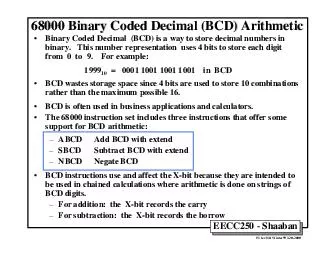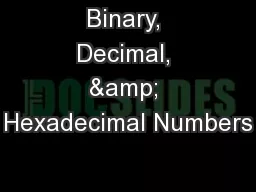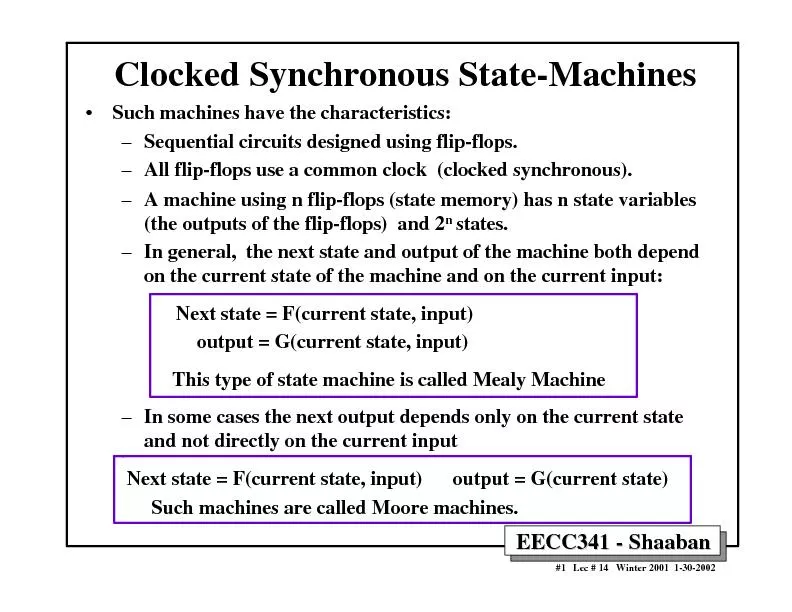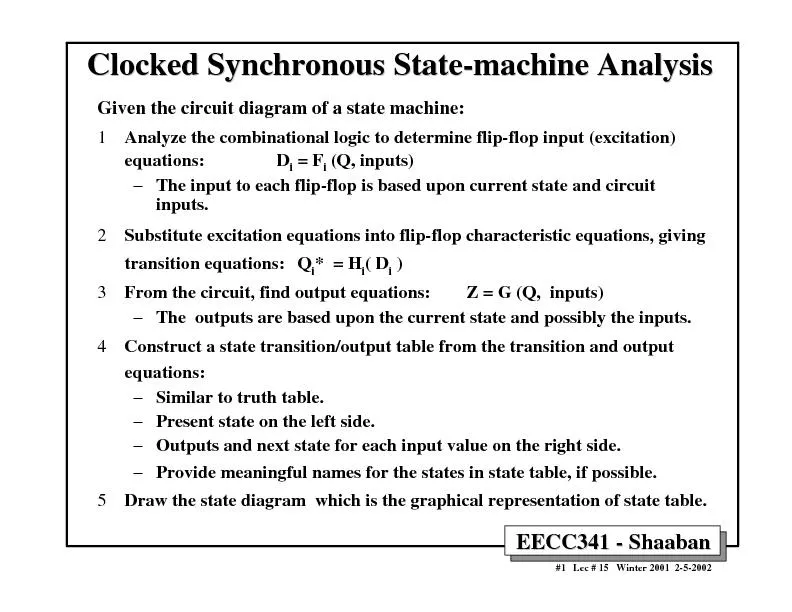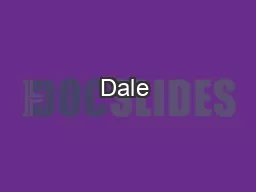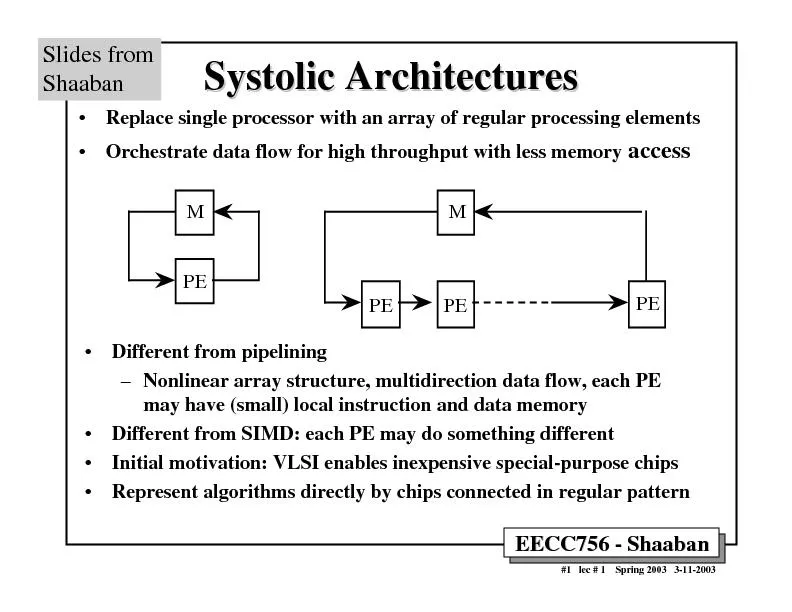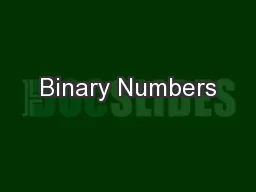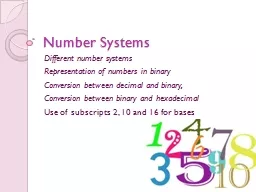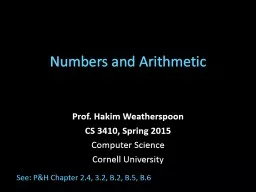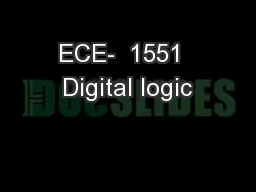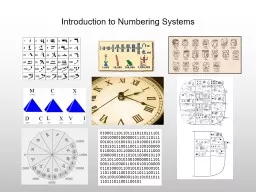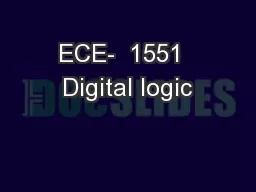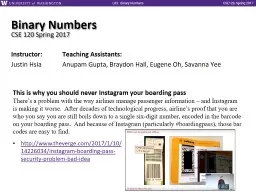PDF-EECC Shaaban lec Winter Binary Coded Decimal BCD Arithmetic Binary Coded Decimal
Author : tatyana-admore | Published Date : 2014-12-12
This number representation uses 4 bits to store each digit from 0 to 9 For example 1999 10 0001 1001 1001 1001 in BCD BCD wastes storage space since 4 bits are used
Presentation Embed Code
Download Presentation
Download Presentation The PPT/PDF document "EECC Shaaban lec Winter Binary Coded..." is the property of its rightful owner. Permission is granted to download and print the materials on this website for personal, non-commercial use only, and to display it on your personal computer provided you do not modify the materials and that you retain all copyright notices contained in the materials. By downloading content from our website, you accept the terms of this agreement.
EECC Shaaban lec Winter Binary Coded Decimal BCD Arithmetic Binary Coded Decimal: Transcript
Download Rules Of Document
"EECC Shaaban lec Winter Binary Coded Decimal BCD Arithmetic Binary Coded Decimal"The content belongs to its owner. You may download and print it for personal use, without modification, and keep all copyright notices. By downloading, you agree to these terms.
Related Documents

